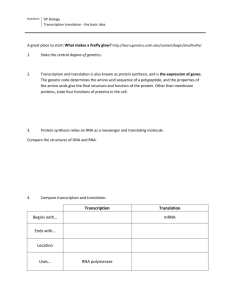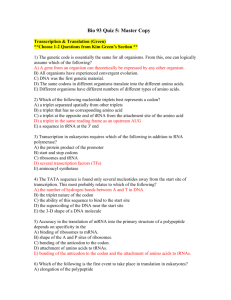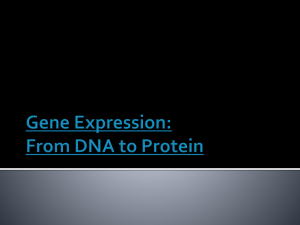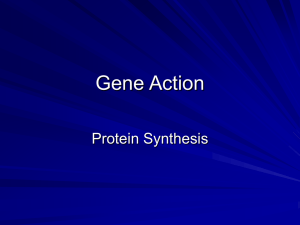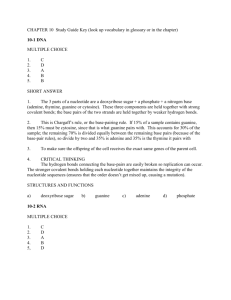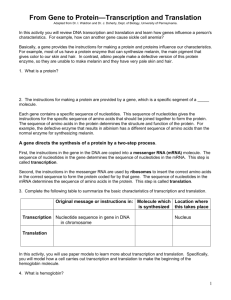From Gene to Protein*Transcription and Translation
advertisement
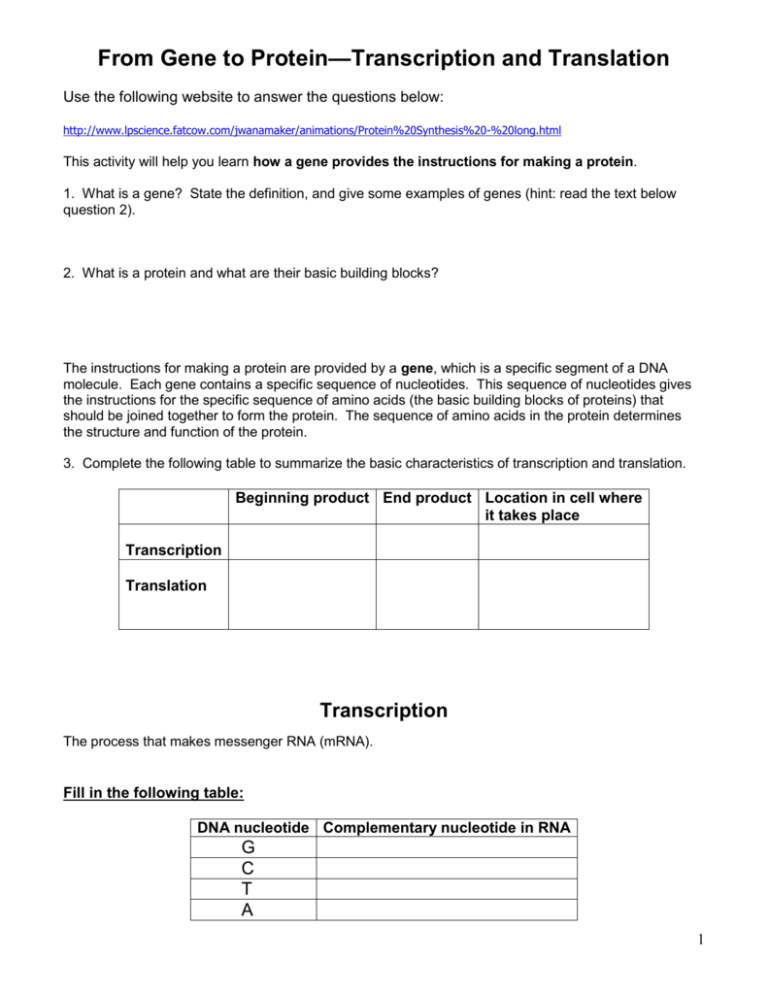
From Gene to Protein—Transcription and Translation Use the following website to answer the questions below: http://www.lpscience.fatcow.com/jwanamaker/animations/Protein%20Synthesis%20-%20long.html This activity will help you learn how a gene provides the instructions for making a protein. 1. What is a gene? State the definition, and give some examples of genes (hint: read the text below question 2). 2. What is a protein and what are their basic building blocks? The instructions for making a protein are provided by a gene, which is a specific segment of a DNA molecule. Each gene contains a specific sequence of nucleotides. This sequence of nucleotides gives the instructions for the specific sequence of amino acids (the basic building blocks of proteins) that should be joined together to form the protein. The sequence of amino acids in the protein determines the structure and function of the protein. 3. Complete the following table to summarize the basic characteristics of transcription and translation. Beginning product End product Location in cell where it takes place Transcription Translation Transcription The process that makes messenger RNA (mRNA). Fill in the following table: DNA nucleotide Complementary nucleotide in RNA G C T A 1 3. To summarize what you have learned, explain the process of transcription. Include in your explanation the words and phrases: base-pairing, complementary nucleotides, cytoplasm, DNA, gene, messenger RNA, nucleotide, and nucleus. Translation In the process of translation, the sequence of nucleotides in messenger RNA (mRNA) determines the sequence of amino acids in a protein. The figure below shows an example of how transcription is followed by translation. (Figure 14.6 from Krogh, Biology, a Guide to the Natural World, 2005) 2 In translation, each set of three nucleotides in an mRNA molecule codes for one amino acid in a protein. This explains why each set of three nucleotides in the mRNA is called a codon. Each codon specifies a particular amino acid. For example, the first codon (sequence of 3 nucleotides on the mRNA) shown above, CGU, instructs the ribosome to put the amino acid, called arginine as the first amino acid in this protein. The sequence of codons in the mRNA determines the sequence of amino acids in the protein. The table below shows six codons as an example. Each different codon codes for a different type of amino acid. mRNA codon ACU CAU CCU CUG GAG GUG Amino acid Threonine (Thr) Histidine (His) Proline (Pro) Leucine (Leu) Glutamic acid (Glu) Valine (Val) How does translation actually take place? Inside a cell, each tiny ribosome provides a workbench with the structure and enzyme needed for translation to take place. But how are the right amino acids added in the right sequence? A special type of RNA, transfer RNA (tRNA), is required to ensure that the correct amino acid is brought in to match each codon in the mRNA. (Figure 14.7 from Krogh, Biology, a Guide to the Natural World, 2005) There are many different types of tRNA. Each type of tRNA molecule carries a particular amino acid. Questions 3 1. The proteins in biological organisms include 20 different kinds of amino acids. What is the minimum number of different types of tRNA molecules that must exist in the cell? 2. Summarize what you have learned by explaining the process of translation. Include in your explanation the words amino acid, codon, cytoplasm, DNA, mRNA, nucleotide, nucleus, ribosome, RNA polymerase, tRNA, transcription, and translation. 4

